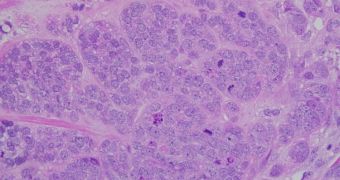Performing clinical breast exams is one of the best ways to go about discovering telltale signs of breast cancer early on. For years, women and clinicians alike have been using the MammaCare tool for this precise purpose. In recognition of its efficiency, it is now being used to train new professionals.
The main purpose these training exercises now have is to lead to an even earlier detection of potentially harmful lumps that may develop in breasts. Finding such structures is usually an indication that that person is at an increased risk of developing this type of cancer soon.
However, discovering nodules or lumps in the breast is not easy. Statistically speaking, women who are untrained in breast self-examinations (BSE) tend to find these structures only when they are about 3.6 centimeters in diameter, or about the size of a ping-pong ball.
Women who are somewhat trained in BSE, and practice it occasionally, can improve their performances, and discover lumps that are about 2.5 centimeters in diameter. By practicing BSE regularly, women can find nodules about 2 centimeters in diameter at home.
However, in professional clinical breast examinations (CBE), doctors can find lumps that are around 1 centimeter in diameter, and this is generally considered to be the norm for detecting such structures.
The US National Science Foundation (NSF) reports that clinicians and women using MammaCare expertly can discover lumps that are only half a centimeter. This means earlier detection in case the formation turns out to be cancerous.
Official statistics from the US Centers for Disease Control and Prevention (CDC) indicate that breast cancer is the second-most common form of cancer among women in America, after skin cancer.
“MammaCare has created the recognized medical and scientific standard for performing and teaching breast examinations,” MammaCare Corporation founder and chairman Mark Goldstein explains.
“You can't palpate a pamphlet but you can train fingers for faster detection and treatment. We took a private event and made it a standard,” he adds. The efforts his company is making to spread the use of this tool are supported through an NSF grant.
“We viewed the company as having valuable technology that was antiquated and that the NSF award could give a boost and modernize a product for education related to cancer detection,” NSF Engineering Directorate program director Glenn Larsen concludes.

 14 DAY TRIAL //
14 DAY TRIAL //